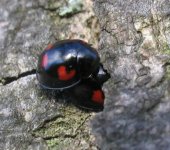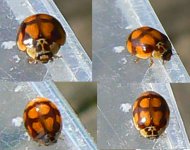Farnboro John
Well-known member
First Ladybird of year in the office in Camberley this lunchtime (31 January!) crawling across the sun blinds. Unfortunately it appears to be the dreaded Harlequin: red/orange with 19 bold black spots. Matches pix on this thread anyway.
John
John






